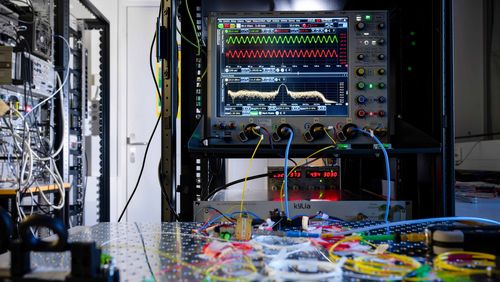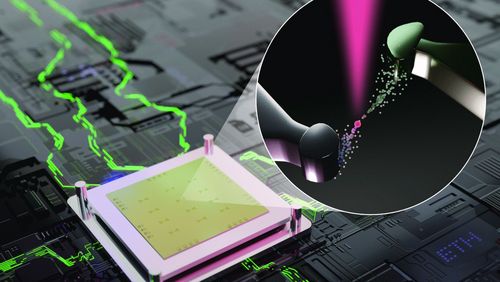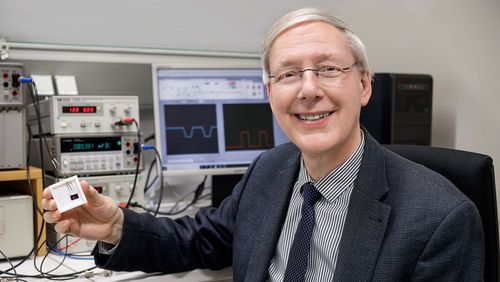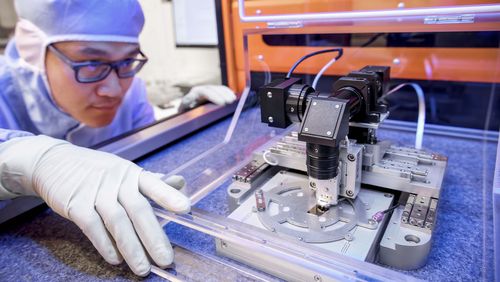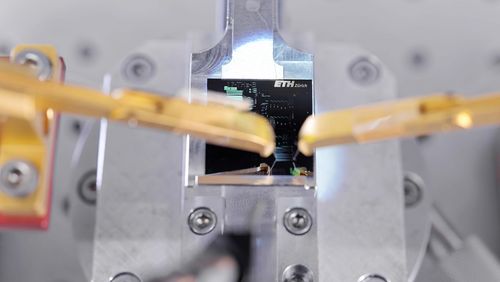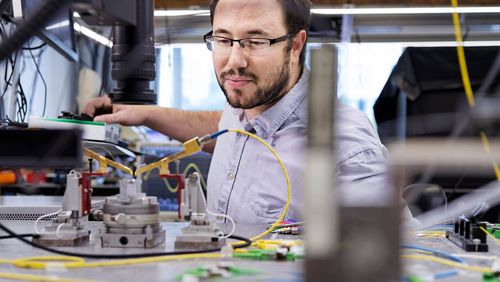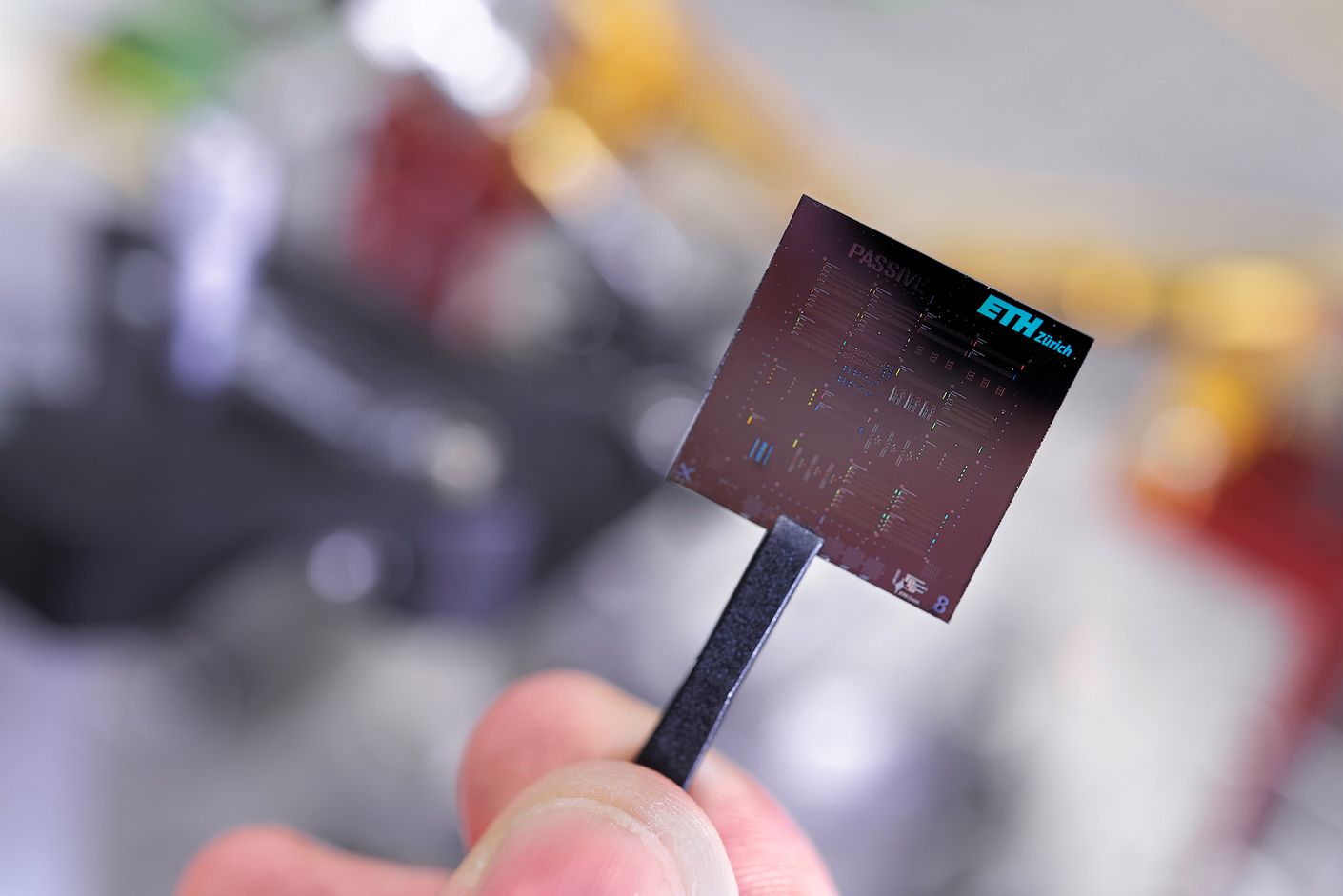
Research at the vanguard
Jürg Leuthold wasn’t interested in taking over his father’s textile factory—a good thing for modern telecommunications. In his work as a physicist, Leuthold develops innovative technologies that haven’t just caught the attention of the global tech community—they’ve been further developed and are now standard elements in everyday devices.
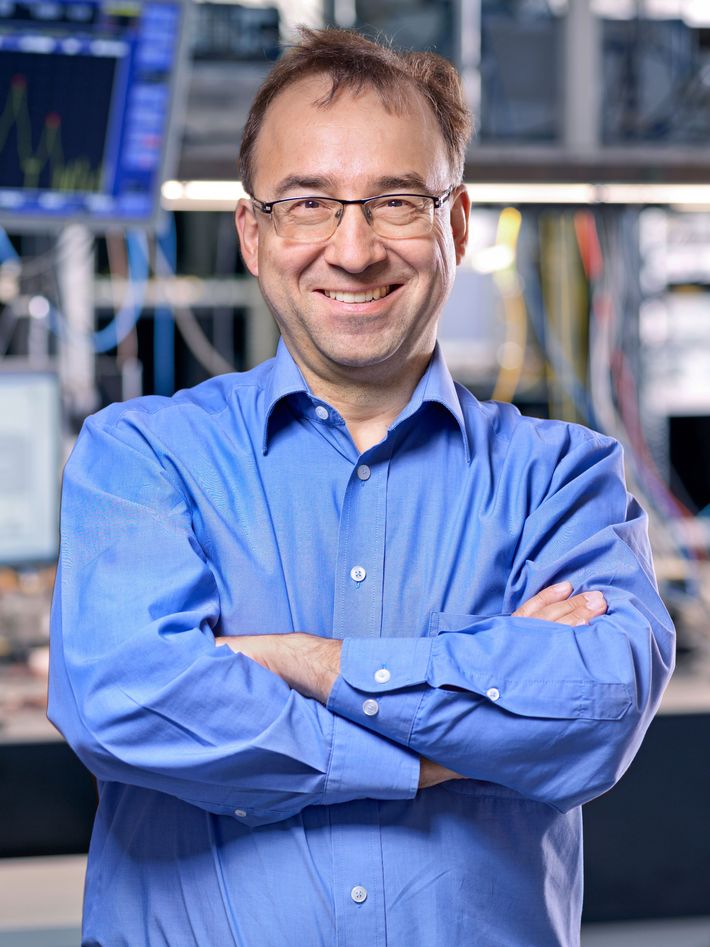
The instructions were as brief as they were demanding: “You can go about your research as you like. But in two years, your name has to be known throughout the global telecommunications community.” These were the orders Jürg Leuthold received from his boss when he began working as a postdoc at Bell Laboratories in 1999. Bell Labs, in the US, were already theinstitution for state-of-the-art technological research that translates into marketable electrotechnical and telecommunications products.
Jürg Leuthold’s daunting task was to develop a chip able to process data faster than any other chip on the market. All earlier attempts had failed, so the pressure was on. “I was definitely in the hot seat, and my boss stopped by every two weeks to check if my calculations were finished and to see if we could create a prototype,” Leuthold recalls. But Leuthold remained true to his roots and, with Swiss precision, spent seven months on completing his calculations. It paid off: a year after he took on the position, when he was 34, Leuthold presented an innovative optical chip at a global conference for fibre-optic communications.
The chip not only broke the world record for fastest data processing: it came at the right time. It was at the turn of the century and the first music services (such as Napster) were being developed and the amount of data in the internet began to increase exponentially. But for Jürg Leuthold, the chip mainly meant mission accomplished: he had become a name in the telecom scene. A few days after the conference, his boss presented him with a company credit card—to set up his own lab.
The repairman’s apprentice
Jürg Leuthold comes by his technical prowess naturally. He grew up in rural Toggenburg, in eastern Switzerland, where his father owned a textile factory in the Neckertal region. As a child, Leuthold paid close attention when the repairman serviced the machines, and he took over this task when he was a teenager. But Leuthold didn’t want to run the textile factory. “I wanted to find answers to fundamental questions, and I wanted to know what holds the world together. What light is,” he recalls.
He found answers during his physics studies at ETH Zurich, and he soon trained his eye on photonics, the partial area of physics that deals with the optical processes behind transmitting, storing and processing information. At the time, it was a field in which numerous fundamental questions remained unanswered. And a field that held great potential for application in industry. In short: the perfect setting for Jürg Leuthold. In the scope of his doctoral dissertation, he helped develop processors that function on the basis of light (instead of electrons) and that are thus faster. His work was noted by technology firms, which soon led him to Bell Labs. The chips Leuthold developed there served as a model for later iterations; in a slightly different form, they are now used in most wide area networks and fibre-optic technology.
Awards, honours and 25 patents
Leuthold carried his early success as a postdoc over to his career in research and development, as is evidenced by 25 patents, numerous awards, including the “Landesforschungspreis” of the German state Baden-Württemberg, and grants from prestigious institutions such as the European Research Council. And yet the core focus of his work has remained the same since his dissertation: high-speed optical communications. “Communicating is a basic human need. My goal is to create innovative communications technologies to make people’s lives easier,” is how Leuthold frames his research. In his recent work, he has again drawn attention in the telecom branch thanks to his state-of the art atomic-scale technologies—which receive funding from the Werner Siemens-Foundation.
Text: Adrian Ritter
Photos: Felix Wey


